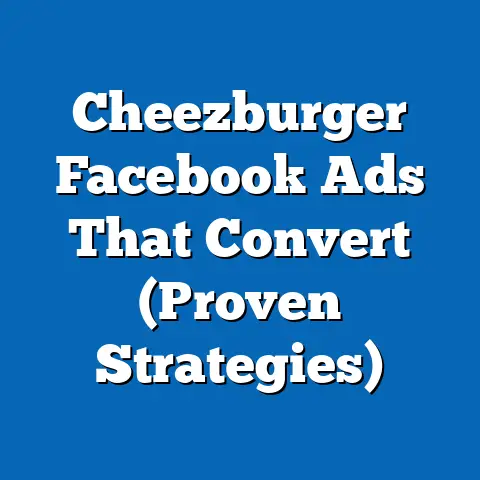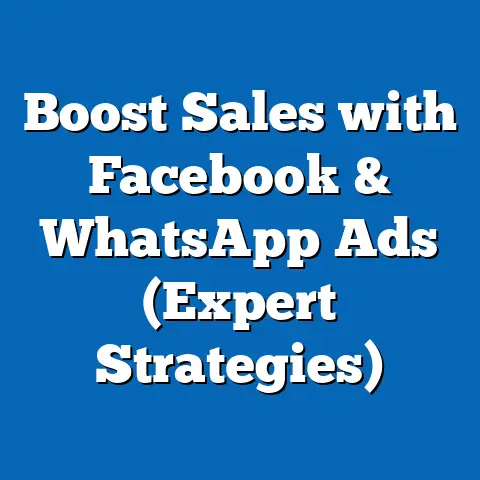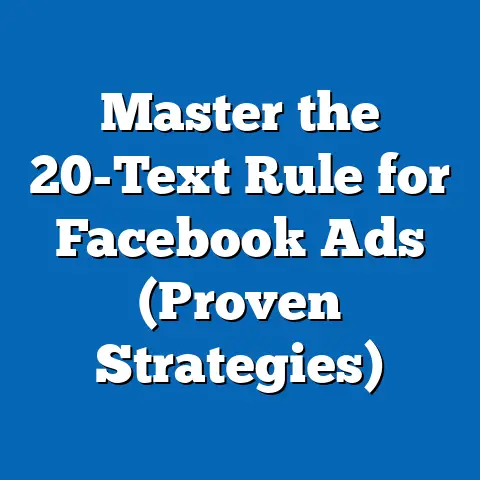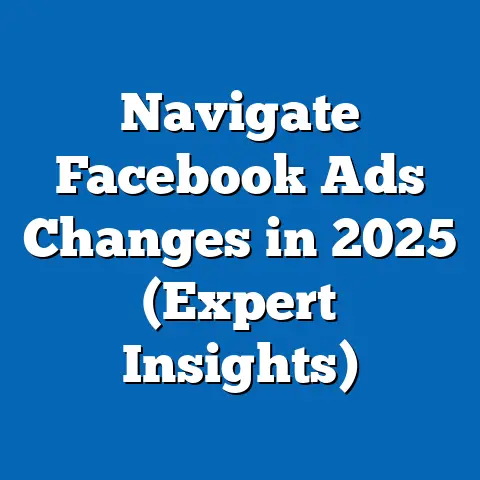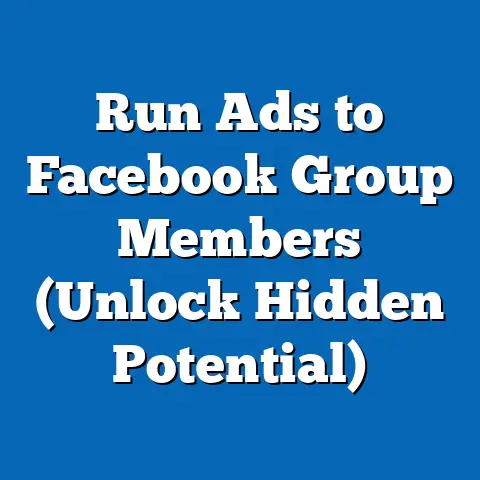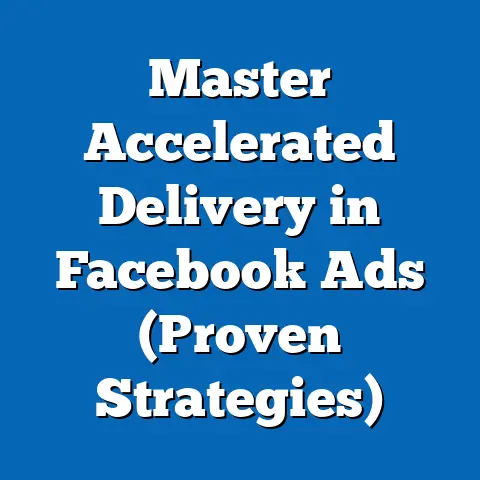Boost Facebook Ads Impressions (Proven Strategies Revealed)
Understanding Facebook Ads Impressions
First, let’s get crystal clear on what we’re talking about. Facebook ad impressions represent the number of times your ad is displayed on the platform, regardless of whether someone actually clicks on it or even notices it. Think of it like billboards on a highway – each time a car passes by, that’s an impression.
Why do impressions matter? Well, they’re the foundation of your ad campaign’s success. You can’t get clicks, conversions, or brand awareness if nobody sees your ad in the first place. Impressions are the first step in the customer journey, and without a healthy number of them, your campaign is dead in the water.
Now, let’s distinguish between impressions and reach. Reach refers to the unique number of people who saw your ad. One person can see your ad multiple times, generating multiple impressions but only contributing to reach once. So, while reach tells you how many different people you’re hitting, impressions tell you the total number of times your ad was displayed. Both are important, but understanding the difference is key to interpreting your ad performance.
Finally, it’s crucial to understand that Facebook’s algorithm plays a huge role in determining your ad impressions. The algorithm prioritizes ads that it believes will be most engaging and relevant to users. Factors like your ad’s quality score, bid amount, and targeting all influence how often your ad is shown. If your ad is deemed low-quality or irrelevant, Facebook will show it less often, resulting in fewer impressions.
Takeaway: Impressions are the foundation of your Facebook ad campaign. Understanding what they are, how they differ from reach, and how Facebook’s algorithm influences them is crucial for optimizing your ad performance.
Here are the strategies I’ve personally used to significantly increase Facebook ad impressions. These are based on my own experiences, industry best practices, and a deep understanding of how Facebook’s algorithm works.Targeting the Right Audience
I can’t stress this enough: Precise audience targeting is the single most important factor in boosting your ad impressions. Think of it like this: showing your ad to the wrong people is like shouting into the void. You’re wasting your budget and annoying users who have no interest in what you’re offering.
Facebook offers a wealth of targeting options, allowing you to narrow down your audience based on demographics, interests, behaviors, and more. Here’s how to leverage these tools effectively:
- Custom Audiences: These are audiences you create based on your existing data, such as customer lists, website visitors, or app users. I’ve seen incredible results using customer lists to target existing customers with special offers or new product announcements. You can upload your customer list to Facebook, and the platform will match those email addresses to Facebook profiles.
- Lookalike Audiences: This is where things get really powerful. Lookalike Audiences allow you to find new people who are similar to your best customers. Facebook analyzes the characteristics of your source audience (e.g., your customer list) and identifies other users who share those traits. I typically start with a Lookalike Audience size of 1-3% of the population in my target country, which tends to provide the best balance between reach and similarity.
- Interest-Based and Behavior-Based Targeting: Facebook allows you to target users based on their interests, hobbies, and online behaviors. For example, if you’re selling fitness equipment, you could target people who are interested in fitness, weightlifting, or healthy eating. I often combine interest-based targeting with demographic targeting to further refine my audience. For example, I might target women aged 25-45 who are interested in yoga and live in a specific geographic area.
One of my biggest successes came from using a Lookalike Audience based on my website visitors who had purchased a specific product. The resulting ad impressions were significantly higher than those from a broad interest-based audience, and the conversion rate was through the roof!
Takeaway: Don’t underestimate the power of precise audience targeting. Use Custom Audiences, Lookalike Audiences, and interest-based targeting to ensure your ads are shown to the people who are most likely to be interested in your product or service.
Crafting Compelling Ad Creatives
Even with the perfect targeting, your ads will fall flat if your creatives aren’t engaging. Remember, people are bombarded with ads every day, so you need to stand out from the crowd.
Here are some tips for crafting compelling ad creatives that capture attention and drive impressions:
- Eye-Catching Visuals: Use high-quality images or videos that are relevant to your product or service. Avoid stock photos that look generic and staged. Instead, opt for authentic visuals that showcase your brand’s personality. I’ve found that user-generated content (UGC) often performs exceptionally well, as it feels more genuine and relatable.
- Engaging Copy: Your ad copy should be clear, concise, and persuasive. Highlight the benefits of your product or service, and use a strong call to action (CTA) to encourage users to click on your ad. I always try to write my ad copy in a way that speaks directly to the target audience’s pain points and desires. For example, instead of saying “Our product is great,” I might say “Tired of struggling with [problem]? Our product can help!”
- A/B Testing: Don’t be afraid to experiment with different ad creatives to see what resonates best with your audience. A/B testing involves creating multiple versions of your ad with slight variations in the visuals, copy, or CTA. Then, you run these ads simultaneously and track their performance to see which version generates the most impressions, clicks, and conversions. I typically A/B test at least two different versions of each ad, and sometimes more, to ensure I’m using the most effective creatives.
I once ran an A/B test where I simply changed the background color of an image in my ad. To my surprise, the ad with the brighter background color generated significantly more impressions and clicks! This just goes to show that even small changes can have a big impact.
Takeaway: Invest time and effort in creating compelling ad creatives that grab attention and resonate with your target audience. Use high-quality visuals, engaging copy, and A/B testing to optimize your ad performance.
Timing and Frequency
Timing is everything, especially when it comes to Facebook ads. Showing your ads at the wrong time can result in wasted impressions and missed opportunities.
Here’s how to optimize your ad timing and frequency:
- Peak Engagement Times: Analyze your audience’s behavior to identify the times when they’re most active on Facebook. You can use Facebook’s Audience Insights tool to get a better understanding of your audience’s demographics, interests, and online activity. I’ve found that ads tend to perform best during the late afternoon and evening hours when people are winding down from work or school.
- Ad Scheduling: Use Facebook’s ad scheduling feature to show your ads only during your audience’s peak engagement times. This will help you maximize your impressions and ensure that your ads are seen by the right people at the right time. I typically schedule my ads to run during the hours of 4 PM to 10 PM on weekdays and throughout the day on weekends.
- Ad Frequency: It’s important to strike a balance between showing your ads frequently enough to maintain interest and overwhelming your audience with too many ads. If you show your ads too often, you risk annoying users and causing them to tune out your message. I generally aim for an ad frequency of no more than 3-4 times per week per user.
I once made the mistake of running my ads 24/7, which resulted in a high ad frequency and a low engagement rate. After adjusting my ad schedule to target peak engagement times, my impressions and engagement both skyrocketed!
Takeaway: Pay attention to the timing of your ad placements and adjust your ad schedule accordingly. Use Facebook’s ad scheduling feature to show your ads only during your audience’s peak engagement times, and be mindful of ad frequency to avoid overwhelming your audience.
Utilizing Facebook Ad Formats
Facebook offers a variety of ad formats, each with its own strengths and weaknesses. Choosing the right ad format can have a significant impact on your ad impressions and engagement.
Here’s an overview of some of the most popular Facebook ad formats:
- Image Ads: These are simple ads that consist of a single image and some text. Image ads are a great option for showcasing your product or service in a visually appealing way.
- Video Ads: These ads consist of a video and some text. Video ads are a highly engaging format that can be used to tell a story, demonstrate a product, or share a testimonial.
- Carousel Ads: These ads consist of multiple images or videos that users can swipe through. Carousel ads are a great option for showcasing multiple products or features in a single ad.
- Slideshow Ads: These ads consist of a series of images that are displayed in a slideshow format. Slideshow ads are a cost-effective way to create visually appealing ads without having to produce a video.
- Collection Ads: These ads are designed for e-commerce businesses and allow users to browse and purchase products directly from the ad. Collection ads are a great option for driving sales and increasing revenue.
I’ve found that video ads tend to generate the highest engagement rates, but they can also be more expensive to produce. Carousel ads are a great option for showcasing multiple products, and image ads are a simple and effective way to promote a single product or service.
When I launched a new line of clothing, I used Collection Ads to showcase the entire collection in a visually appealing way. The resulting ad impressions and sales were significantly higher than those from my previous campaigns using image ads.
Takeaway: Experiment with different ad formats to see what works best for your business. Consider your campaign goals, target audience, and budget when choosing an ad format.
Analyzing and Adjusting Your Strategy
Increasing your Facebook ad impressions is an ongoing process that requires continuous monitoring, analysis, and optimization. Don’t just set it and forget it!
Here are some key metrics to track in Facebook Ads Manager:
- Impressions: This is the number of times your ad was displayed.
- Reach: This is the number of unique people who saw your ad.
- Click-Through Rate (CTR): This is the percentage of people who saw your ad and clicked on it.
- Cost Per Thousand Impressions (CPM): This is the cost of showing your ad to 1,000 people.
- Engagement Rate: This is the percentage of people who interacted with your ad (e.g., liked, commented, shared).
By tracking these metrics, you can identify areas where your ad campaign is performing well and areas where it needs improvement. For example, if your impressions are high but your CTR is low, it may indicate that your ad creative isn’t engaging enough. If your CPM is high, it may indicate that your targeting is too broad or that your ad is competing with too many other ads.
Based on your data insights, you can iterate on your strategies by adjusting your targeting, creatives, timing, or ad format. I typically review my ad performance on a daily basis and make adjustments as needed to ensure that my campaigns are running optimally.
Takeaway: Monitor your ad performance regularly using Facebook Ads Manager. Track key metrics such as impressions, reach, CTR, CPM, and engagement rate to identify areas for improvement. Iterate on your strategies based on data insights to continuously optimize your ad campaigns.
Conclusion
Boosting your Facebook ad impressions is crucial for driving traffic, engagement, and ultimately, better results for your business. By implementing the proven strategies I’ve shared in this guide, you can significantly increase your ad impressions and take your Facebook advertising to the next level.
Remember to focus on targeting the right audience, crafting compelling ad creatives, optimizing your ad timing and frequency, and utilizing the right ad format. And don’t forget to continuously monitor your ad performance and make adjustments as needed based on your data insights.
Now it’s your turn! Take action and implement these strategies in your next Facebook ad campaign. I’m confident that you’ll see a significant improvement in your ad impressions and overall campaign performance. Go out there and drive your Facebook ad performance to new heights! And please, share your results with me – I’m always eager to hear about your successes!

